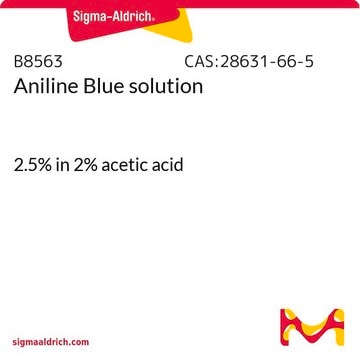HT10516
Trichrome Stain AB Solution
Synonym(s):
Gomori One Step Trichrome (Aniline Blue) Procedure
Sign Into View Organizational & Contract Pricing
All Photos(1)
About This Item
UNSPSC Code:
41116121
NACRES:
NA.47
Recommended Products
form
solution
shelf life
Expiry date on the label
IVD
for in vitro diagnostic use
application(s)
hematology
histology
storage temp.
room temp
Application
Intended for use in the study of connective tissue, muscle and collagen fibers. Stains collagen blue and muscle red.
Other Notes
Chromotrope 2R, aniline blue and phosphotungstic acid.
Storage Class Code
12 - Non Combustible Liquids
WGK
WGK 2
Flash Point(F)
Not applicable
Flash Point(C)
Not applicable
Personal Protective Equipment
dust mask type N95 (US), Eyeshields, Gloves
Choose from one of the most recent versions:
Certificates of Analysis (COA)
Lot/Batch Number
Don't see the Right Version?
If you require a particular version, you can look up a specific certificate by the Lot or Batch number.
Already Own This Product?
Find documentation for the products that you have recently purchased in the Document Library.
Customers Also Viewed
Our team of scientists has experience in all areas of research including Life Science, Material Science, Chemical Synthesis, Chromatography, Analytical and many others.
Contact Technical Service









